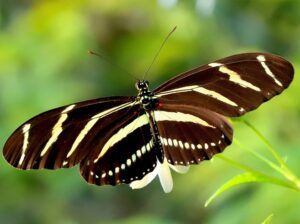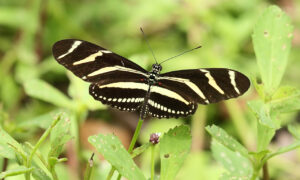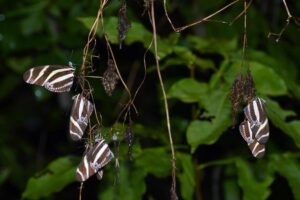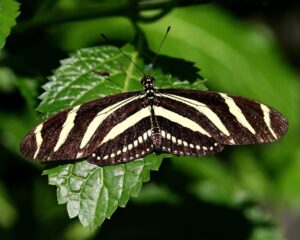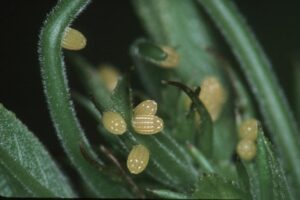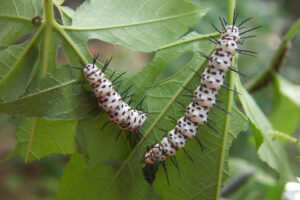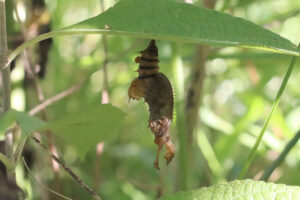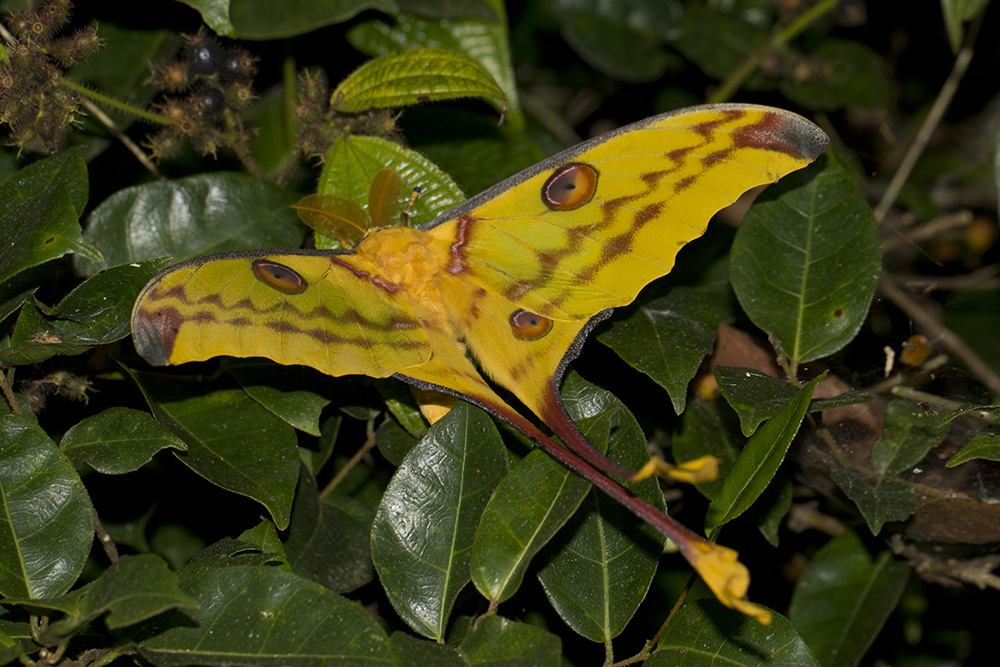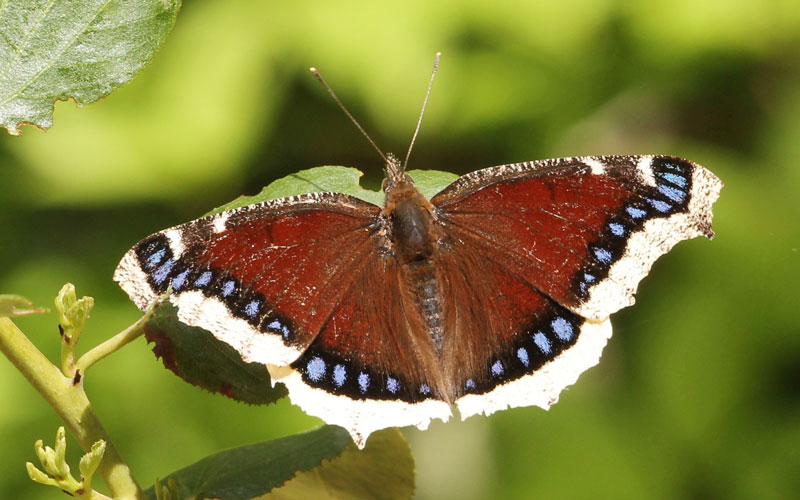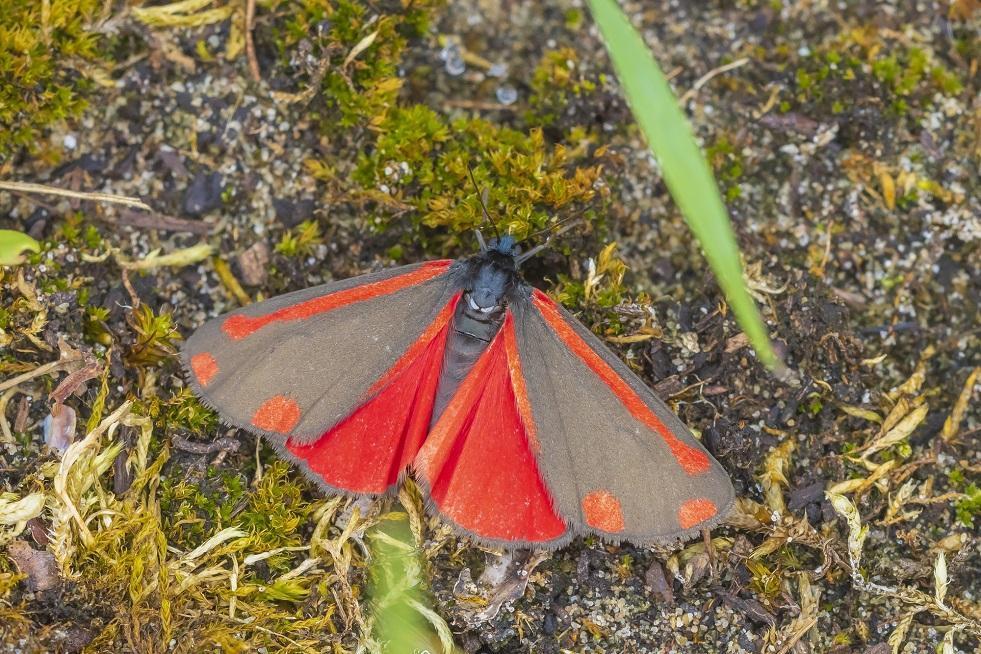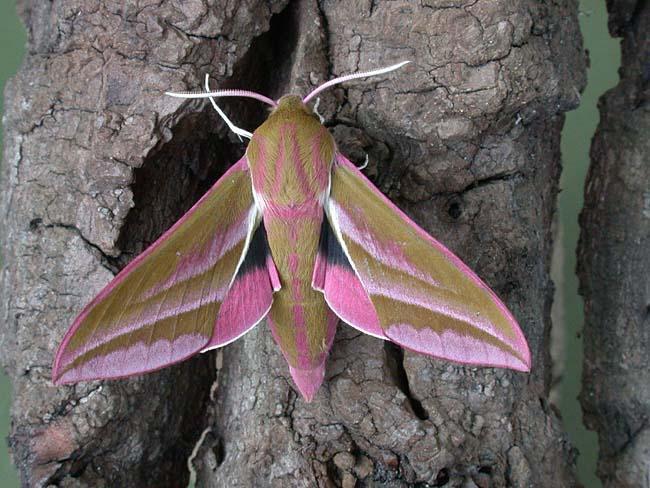Zebra Longwing Butterfly (Heliconius charithonia)
Updated on
17/11/2022The zebra longwing butterfly was first described in 1767 by Carl Linnaeus in the final edition (12th) of his book Systema Naturae. Its black and white wing pattern replicates a zebra’s body resulting in its name. It has a wide range across South America, Central America, and some parts of the United States. They have been designated as Florida’s state butterflies since 1996.
Scientific Classification
- Class:Insecta
- Order:Lepidoptera
- Family:Nymphalidae
- Genus:Heliconius
- Species:H. charithonia
Conservation Status
Description
These monomorphic butterflies come in a single form without any color morphs. They are medium in size with elongated, narrow wings, as evident by their name, ‘longwing,’ and long, black antennae. The dorsal part of their wings is black, marked with white and yellow stripes. The ventral side has a similar pattern but appears paler. The only addition is the red spots to the side. Their wingspan range between 70 and 100 mm.
Distribution: Central America, South America, Mexico, and certain parts of the United States like Florida and south Texas; they may inhabit Nebraska, South Carolina, and New Mexico in the warmer months
Habitat: Prefers warm, and damp tropical areas, inhabiting fields, edges, moist forests, thickets, and hammocks
Do they bite: No; the venomous spines of the larvae aren’t venomous too
Lifespan: Around a month
Predator: Bugs, mammals, amphibians
Subspecies
- H. c. charithonia (Ecuador)
- H. c. bassleri (Colombia)
- H. c. simulator (Jamaica)
- H. c. tuckeri (Florida)
- H. c. churchi (Hispaniola)
- H. c. antiques (Antigua)
- H. c. vazquezae (Mexico-Panama)
- H. c. ramsdeni (Cuba)
Behavior and Characteristics
Social
Roosting is common among these butterflies, mostly occurring at night in groups as large as 60. This unique strategy is adopted to stay safe from predators and remain warm. They return to the same roosting site each night that commences 3 hrs before sunset and ends in 2hrs post sunrise. A hierarchy is maintained, with the older butterflies getting the privilege of choosing the best roosting site. Before roosting, they communicate with community members by sitting close to each other and chasing one another during basking or fluttering.
Vocalizations
They vocalize through a creaking sound when disturbed. These butterflies even wiggle their body simultaneously.
Intelligence
They are reputed because of their intelligence. Because of their sharp memory, these butterflies remember their host plants and return to the same food sources they previously fed on.
Sharp eyesight
The visual purple or UV rhodopsins in their eyes help them identify the yellow pigments. Hence, these butterflies can easily spot tendrils, dry leaves, and twigs when preparing to roost. Their sharp eyesight also helps them locate conspecifics roosting in other sites.
Chemical cues
Chemical cues comprising volatile and nonvolatile substances help these butterflies identify conspecifics at a shorter distance.
Mating
These butterflies follow a unique technique of pupal mating. The male zebra longwing begins searching for mates even before they emerge from the chrysalis. Finding the chrysalis is challenging, yet the male tries to locate it via tactile, olfactory, auditory, and visual cues. The pupae mostly camouflage themselves among leaves and do not have sexual pheromones, leaving olfactory cues the only option for males to search them. As soon as the females emerge from the pupa, two or more males fight against each other to seek their prospective mate. They display various fighting techniques, like throwing off their foe using their antennae and head.
The winner chooses his mate and even sprays a spermatophore on the female so that she becomes less attractive to other mates trying to seek her.
Feeding
The adults feed on pollen and nectar, which helps them live for three months in the wild and about five months in captivity. Pollen feeders appear distasteful to the predators. They even look brighter and more intimidating to their enemies. The choice of their home range depends on their collection of pollen plants. While extracting the pollen, the adults coil their elongated appendages or proboscis and insert them inside the flowers. The pollen is digested immediately after ingestion. Females that don’t feed on pollen will have a low reproductive rate over pollen feeders.
The larva’s diet comprises corky-stemmed passionflower, two-flower passionflower, and yellow passionflower.
Life Cycle
1. Egg Stage
After mating, the female goes on to lay eggs on passionflower plants, around 5-15 at a time. The yellow eggs are elongated with a ribbed pattern.
2. Larva Stage
They appear white with black spots and soft black spines on their back. The caterpillars go through five molts before entering pupation.
3. Pupa Stage
The pupae have a brown body with two elongated ridges on their head.
4. Adult Stage
There is hardly any difference between males and females.
Damage Caused by Them
They aren’t that harmful, yet the caterpillars often strip the passion flowers of their protective hairs, causing some damage.
Source
cdn.butterflyatlas.org, ecoregistros.org, nhpbs.org, c1.wallpaperflare.com, fs.usda.gov, blog.wfsu.org




